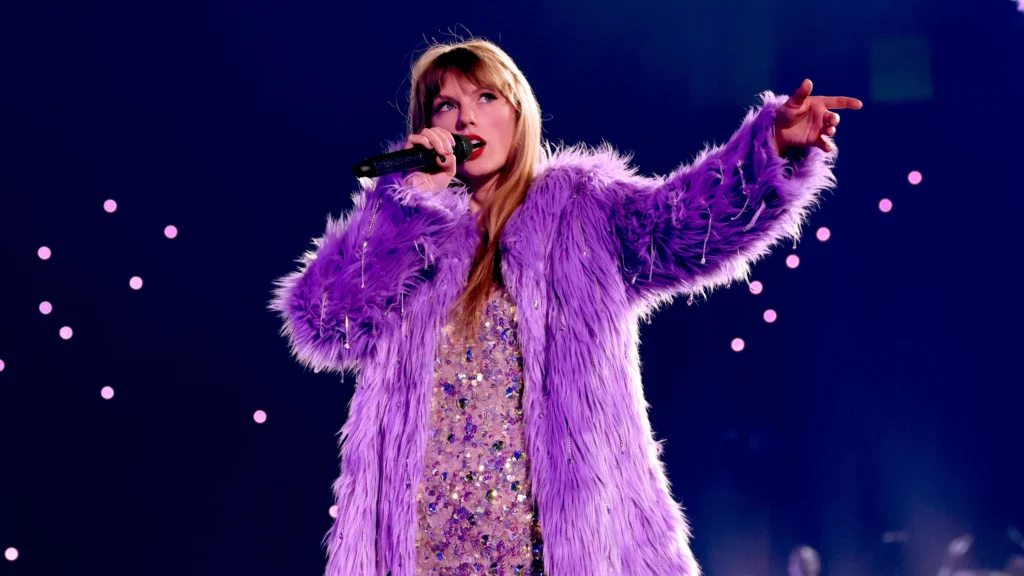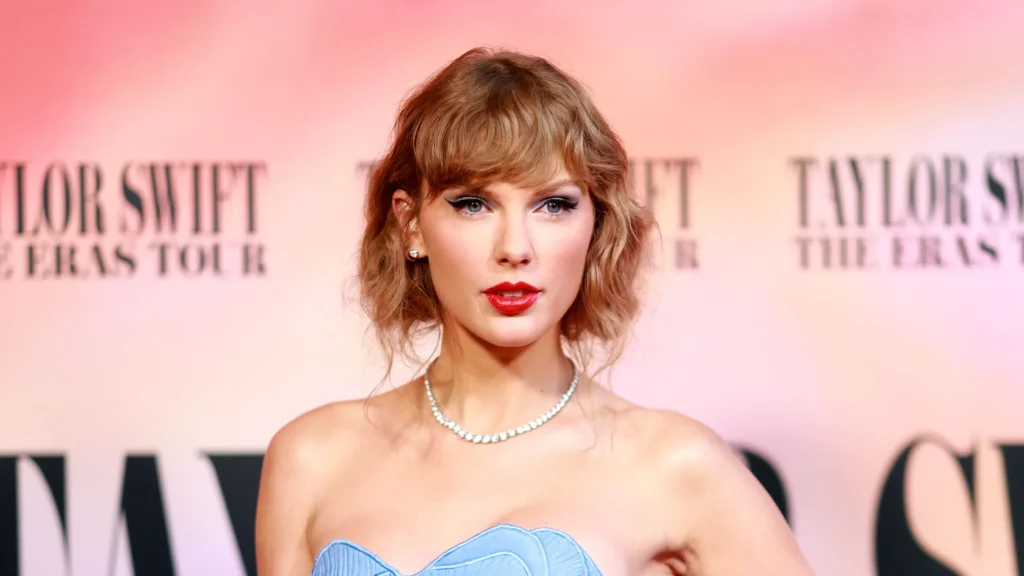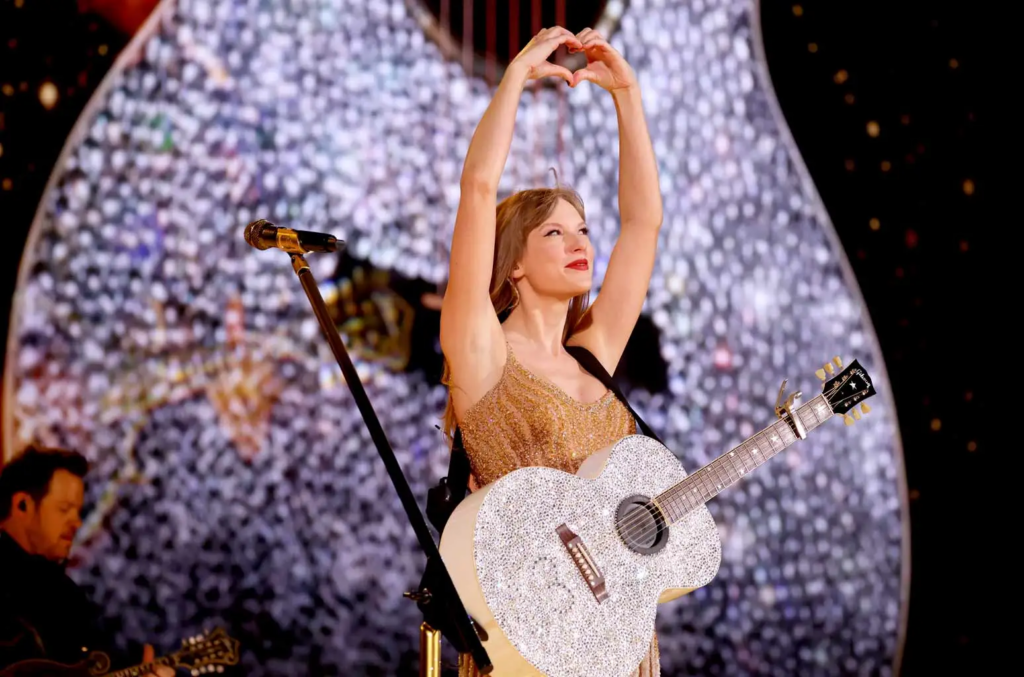"Taylor Swift's lyrics resonate worldwide, capturing hearts and sparking debate on their literary depth."

Only a few musicians in popular music capture the same level of attention and affection that Taylor Swift does. Swift has established herself as one of the most influential figures in contemporary pop culture, through her catchy melodies and relatable lyrics. Her songs have a strong resonance with listeners all across the world.
As Swift continues to garner numerous prestigious awards and acclaim for her contributions to music, a more serious concern arises: Do Taylor Swift’s lyrics have any real literary value?
Narrative Structure

Many of Taylor Swift’s songs are like mini-novels set to music. They begin someplace, take us on a journey, and conclude, exactly like narratives found in books. They stand out because they explore topics such as love, heartbreak, friendship, and personal growth—the things that make life feel like a story worth telling. Taylor is a skilled storyteller, combining her experiences into relevant stories that hit close to heart.
Take “Champagne Problems,” for instance. It explores the idea of problems that might seem small to others but carry significant weight for the individual. Taylor Swift’s song paints a vivid picture of someone struggling with personal issues, like turning down a marriage. The lyrics, such as “Your mom’s ring in your pocket, My picture in your wallet, Your heart was glass, I dropped it, Champagne problems,” capture the essence of the song’s emotional depth. In her typical style, Taylor Swift’s song feels genuine and sincere, offering insight into human emotions and relationships.
Then there’s “Speak Now,” which feels like a musical version of a rom-com. With her lyrics and catchy tunes, she tells this story about a girl crashing a wedding. In the song, she urges, “Don’t say yes, just run away now. I’ll meet you at the back door when you’re out of the church. Don’t bother saying any vows.” Every verse gets us closer to the couple’s daring escape. It’s lighthearted but expertly produced, demonstrating Taylor’s exceptional storytelling ability.
Symbolism and Metaphor

Taylor Swift does more than simply create great songs and relatable lyrics; she’s also great with symbolism and metaphor. These literary techniques give her songs more depth and delicacy, allowing them to connect with listeners on a deeper level. Taylor uses sophisticated wordplay and imagery to tell stories inside her songs that are up to interpretation.
In “Red,” Taylor Swift crafts another poignant metaphor that captures the complexity of relationships. When she sings, “Fighting with him was like trying to solve a crossword and realising there’s no right answer,” She offers a realistic image of the frustration and futility that many people feel during arguments.
Taylor’s metaphor captures the sense of ambiguity and uncertainty that can occur when two people clash. Like a difficult crossword with no clear answer, the tensions she recounts leave both sides confused and uncertain of how to proceed. It’s an effective portrayal of the complexity that comes with interactions between people, where emotions, egos, and opposing viewpoints frequently collide.
Taylor’s use of metaphor may also be seen in “All Too Well.” This song is a lyrical gem. The scarf metaphor evolves into a powerful symbol of lost love and nostalgia, weaving its way through the words as a physical recollection of a previous relationship. The scarf takes on a life of its own, representing the memories and feelings that endure long after the relationship is over.
Through songs like these, Taylor Swift showcases her skilful use of symbolism and metaphor, turning everyday objects and experiences into profound reflections on life, love, and the human condition. It’s this ability to infuse her music with layers of meaning that sets her apart as one of the most compelling songwriters of our time.
Commercial Intent

Taylor Swift is known for writing songs that fascinate large audiences. Critics, on the other hand, are sceptical of Swift’s commercial success. They say that, while her songs top the charts, their commercial success frequently overshadows their creative merit. In the competitive world of pop music, where success is judged by record sales and sold-out arenas, Swift’s critics wonder if her financial success detracts from her song’s literary value.
Although Swift’s songs reach millions of people around the world, her creative value remains debatable. She’s constantly managing commercial success and staying faithful to her talent, balancing pop recognition and critical acclaim. However, in an environment where entertainment and expression intersect, Swift’s music may be worth appreciating for its capacity to bridge the gap between commercial appeal and artistic expression, exceeding the confines of traditional literary discourse.
Cultural and Societal Bias

Cultural and societal biases frequently cast shadows over popular culture, including music, potentially clouding judgments on whether Taylor Swift’s songs may be considered literature. Within literary circles, old-fashioned forms and genres take primacy over modern commercial music, affecting conceptions of what constitutes literature. This bias can lead to songs being excluded from literary discourse, as certain scholars and critics value the written word over the auditory experience provided by music.
However, such biases may obscure the literary value of Swift’s music. While her music may not meet conventional literary requirements, it is indisputably culturally significant and resonates strongly with millions of listeners around the world. By widening the definition of literature to include various forms of artistic expression, such as music, we may see Swift’s contributions as part of a rich and developing literary landscape.
Despite some critics’ concerns about Swift’s commercial appeal, there’s no questioning her ability to balance pop popularity and literary recognition. While cultural biases may sometimes exclude modern music from literary conversations, Swift’s work questions established assumptions of what constitutes literature. By encouraging us to appreciate music’s storytelling power, she expands our understanding of the various types of artistic expression that influence our world.
Thinking of doing a deeper dive into Literature? Try out Curio’s classes and immerse yourself in the fabulous worlds made up of prose, poetry and plays!
